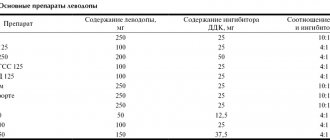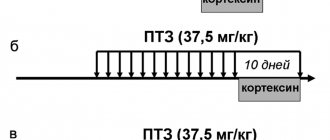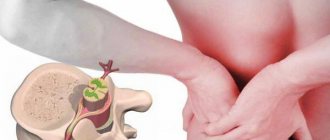Nowadays there are many drugs for dizziness, including those containing betahistine. Among the names you can often hear Betaserk, Vestibo, Tagista, Betaver, Vesticap and others. At the same time, many people are interested in: how do the drugs differ and which one is the best? What is better to buy at the pharmacy if there are a large number of trade names to choose from, and the doctor is forced to write the generic name? I would like to address this issue in this article.
A little about original drugs
But first, we need a little insight into the question of what is the original drug. The original medicine is called the medicine of the company that invented the formula of the active substance. It should be noted that several years pass before entering the market. The substance undergoes multi-stage testing: theoretical, on animals, after proven safety, clinical trials on humans are carried out. At the same time, the rules governing the entry of funds into the market are very strict.
What happens next? The drug is launched on the market. Moreover, only the manufacturer has a patent for the production of the formula. However, a patent has a duration period, after which the formula must be available to other companies. Of course, this does not happen for free; the rights to implement the formula cost money, but the manufacturing company is not obliged to sell some know-how, as well as ways to obtain the formula. And the aspects of cleaning the product from unwanted impurities and the influence of fillers remain, as they say, behind the scenes.
It is also important that the new manufacturer is not required to conduct clinical trials on effectiveness and safety. This often happens in order to gain a proper reputation for other issues (obtaining the right to be called a bioequivalent of the original drug and other marketing moves, the essence of which is not so important in this article). Happens often, but by no means always. Just as the effectiveness is not always the same, whereas for the original drug it is a priori high and proven by tests.
What am I getting at? I lead to the fact that the original drug of the substance betahistine is Betaserc. But which one is better will be discussed below.
Vestibo in the treatment of vestibular and auditory disorders
Kunelskaya N.L., Levina Yu.V., Doronina O.M., Krasyuk A.A., Izotova G.N.
Cochleovestibular disorders (CVD) occupy one of the leading places among various pathologies of the ENT organs and lead to limited or complete loss of ability to work in patients [2]. At the same time, there is not only an increase in morbidity, but also damage to people of young working age. Unfortunately, there is still no consensus on the etiology and pathogenesis of this pathology, or on the treatment strategy. This is apparently due to the fact that CIs are not specific and cannot be isolated into an independent nosological form - they are a functional response of the inner ear and other parts of the auditory and vestibular analyzer to multifactorial pathological influences [1,3]. In this regard, there are many methods of surgical and drug treatment of patients with this pathology, each of which, affecting individual parts of the pathological process, naturally cannot give a lasting positive effect [2,4].
Clinically, CVI, regardless of the etiology of the lesion, is characterized by impaired auditory and vestibular function in varying sequences and degrees of severity. This clinical symptomatology is due to the close anatomical proximity of the peripheral parts of the auditory and vestibular analyzers. Identifying the presence, nature and severity of damage to the auditory and vestibular analyzers during CVI plays an important, sometimes fundamental role in the diagnosis of CVI.
Since auditory, and especially vestibular disorders have poor subjective tolerance and can cause or aggravate psycho-emotional disorders, symptomatic therapy aimed at eliminating these disorders is of great importance in the treatment of CVI.
One of the most effective approaches to drug therapy for CVI is the effect on the histaminergic system, whose role in the development of vestibular and auditory disorders is very important. Endogenous histamine has many vital functions and is found in all organs and tissues of the human body. To date, three types of its receptors have been discovered: H1, H2 and H3. Injection of a weak histamine solution was first successfully used to treat Meniere's disease more than 30 years ago. In this case, it was necessary to very accurately calculate the dosage of the drug, because histamine causes many side effects: it belongs to the group of inflammatory mediators and activates the processes of allergic and free radical inflammation, which carry a membrane-destructive component; causes a decrease in blood pressure, an increase in permeability and expansion of capillaries, etc.
A modern synthetic analogue of histamine, devoid of these side effects, is betahistine, which has significant structural similarity to histamine, has a histamine-like and vasodilating effect, but unlike histamine is not metabolized in the liver and can be administered orally [8]. This drug is a weak H1 receptor agonist and a fairly potent H3 receptor antagonist. By direct agonistic effects on the H1 receptors of the vessels of the inner ear and the precapillary sphincters of the microvasculature located in the stria vascularis, as well as indirectly through the H3 receptors, betahistine improves microcirculation and capillary permeability, normalizes endolymph pressure, increases blood flow in the basilar artery [ 9,10]. This drug has a pronounced central effect: being an antagonist of H3 receptors of the vestibular nerve nuclei, it normalizes neuronal transmission in polysynaptic neurons of the vestibular nuclei at the level of the brain stem; indirectly affecting H3 receptors, it increases the content of serotonin in the brain stem, which reduces the activity of the vestibular nuclei [11]. Thus, betahistine helps eliminate disorders of both the vestibular and cochlear apparatuses. It should be noted that this drug, stimulating H1 receptors, does not have a sedative effect and does not cause drowsiness.
Betahistine is widely used for all forms of CVC both in our country and abroad [6,12]. Currently, there is virtually no data in the literature on instrumental methods for studying auditory and vestibular functions in patients with CVI while taking betahistine-containing drugs and, in particular, the drug Vestibo. This drug is produced by Actavis Group JSC (Iceland). Each Vestibo tablet contains the active substance - betahistine dihydrochloride 16 mg, as well as excipients: povidone K90, microcrystalline cellulose, lactose monohydrate, colloidal silicon dioxide, crospovidone, stearic acid.
In connection with the above, the purpose of our study was to study the effectiveness and safety of betahistine (Vestibo) in monotherapy in the treatment of subjective and objective vestibular and auditory disorders of various origins, labyrinthine hydrops and cerebrovascular accidents.
Materials and research methods
We conducted a comprehensive examination and treatment of 40 patients with cochleovestibular disorders, of which 24 were women and 16 men aged from 20 to 64 years (on average 36±6.5 years). The duration of the disease ranged from 2 to 28 years (average 5±2.5 years). We included in the study all patients with auditory and vestibular disorders who agreed to participate in clinical studies. The criteria for excluding patients from the study were: diseases of the middle ear, pregnancy and lactation, individual intolerance to betahistine, pheochromocytoma, gastritis, peptic ulcer of the stomach and duodenum, bronchial asthma, cancer, the need for additional drug therapy.
As therapy, all patients received only Vestibo 16 mg 3 times a day for 90 days.
The effectiveness of treatment was assessed using the following indicators.
1. Dynamics of clinical symptoms - subjective assessment of the state of hearing, speech intelligibility, tinnitus, unsteadiness of gait in points: 0 - no symptom, 1 - mildly expressed symptom, 2 - moderately expressed symptom, 3 - strongly expressed symptom.
2. Assessment of the severity of dizziness according to the criteria for the severity of functional impairment according to the WHO International Classification of Functions: 0 – none (none, insignificant), 1 – mild (insignificant, weak), 2 – moderate (moderate, significant), 3 – severe (high, intense ), 4 – absolute (complete).
3. Evaluation of the results of instrumental methods for studying the state of the auditory analyzer: tone threshold, suprathreshold and speech audiometry; determination of auditory sensitivity to ultrasound (USV) and the phenomenon of its lateralization; noise metry with determination of frequency and intensity of ear noise.
4. Evaluation of the results of objective methods for studying the state of the vestibular analyzer: spontaneous vestibular symptoms - a complex of statokinetic and index tests; cold and thermal air caloric tests and rotational tests according to videonystagmography or electronystagmography; functional computer stabilometry.
5. Evaluation of the results of dehydration tests or electrocochleography results.
6. Evaluation of the results of a study of cerebral hemodynamics (REG, USDG of cerebral vessels).
All studies were carried out over time: before treatment, 14 days, 30 and 90 days after the start of treatment. Thus, the clinical efficacy and safety of the drug Vestibo in relation to cochleovestibular disorders was assessed on the 14th, 30th, 90th day after the start of treatment based on the dynamics of changes in the severity of clinical symptoms of the disease, data from a comprehensive otoneurological study using audiological examination, vestibular tests, assessment of labyrinthine hydrops and the state of cerebral vessels, the presence or absence of side effects.
Research results
Upon admission, all patients complained of unilateral (29 people) or bilateral (11 patients) hearing loss, which was assessed by patients as moderate (28 people) or severe (12 people); the presence of tinnitus of varying tonality and intensity - weak (11 people), moderate (19 patients) and strong (10 people); speech intelligibility impairment – mild (29 patients) and moderate (11 patients).
Attacks of systemic dizziness, accompanied by nausea and vomiting (lasting from 5 to 10 hours), occurring from 1 to several times a week or month, bothered 20 patients: moderate in 11, severe in 9. All patients complained of unsteadiness of gait, with moderate unsteadiness in 26 and severe unsteadiness in 14.
During an audiological examination, 28 patients were diagnosed with hearing loss of II degree, and in 12 - III degree; FUNG according to suprathreshold tests was detected in 20 patients; the USV perception threshold was increased (up to 4.5 V when the norm is 1.8–3.5 V) in 20 and unchanged in 20 patients; lateralization of the USV in 20 patients was towards the diseased or worse hearing ear, and in 20 patients - towards the healthy or better hearing ear; in 29 patients, 100% speech intelligibility was observed, while there was an expansion of the speech intelligibility curve; in 11 patients, 100% speech intelligibility could not be achieved; during noise metry, high-frequency noise at frequencies >8 kHz was determined in 19 patients, mid-frequency noise at frequencies of 4–8 kHz – in 12 patients, 9 patients did not differentiate the frequency of the noise. Dehydration tests and/or electrocochleography revealed labyrinthine hydrops in 20 patients.
During a vestibulological study, spontaneous vestibular symptoms were revealed in all patients in the form of disturbances in static coordination and pointing tests; spontaneous nystagmus of the first degree - in 15, second degree - in 16 and third degree - in 9 patients (while in 20 patients it was unilateral, and in 20 it was bilateral). In all patients, experimental vestibular reactions were of a mixed type with a predominance of the peripheral component in 20 patients and the central component in 20 patients. The asymmetry coefficient of the labyrinth was on average 72±4.5% (with a norm of <40%). In 31 patients, directional predominance of nystagmus occurred (the coefficient of directional predominance of nystagmus was 65±5.6%, with the norm being <40%); in 5 patients there was dissociation of caloric and rotational tests; in 3 people – dissociation of the components of the vestibular reaction (postracranial type of course of experimental vestibular reactions). During stabilometry, a pronounced disturbance of statics was noted in all patients, while the balance function indicator was 1.95±0.87, with the norm being <5.
When studying cerebral hemodynamics according to ultrasound and REG data, both disorders of the arterial and venous blood supply to the brain were detected in the group. Severe venous discirculation with signs of venous stagnation was revealed in 25 patients.
14 days after the start of treatment of patients with Vestibo, no changes in the clinical symptoms of CVI were detected. The results of a comprehensive examination of patients also did not reveal any changes compared to the initial data. After 30 days of treatment with Vestibo, a clear improvement in vestibular, but not auditory function was diagnosed. In all patients, the duration and severity of dizziness decreased in terms of the intensity of systemic dizziness itself and vegetative manifestations; 22 patients rated it as mild, 18 as moderate. Regardless of the presence or absence of labyrinthine hydrops, in all patients the unsteadiness of gait decreased to mild - in 26 and moderate - in 14, while there was a tendency towards normalization of the statocoordination and pointing tests. The results of experimental vestibular reactions did not change, but the balance function indicator increased to 3.25±0.72 and the coefficient of labyrinth asymmetry decreased to 61±5.4%.
After 90 days of treatment with Vestibo, patients showed positive dynamics in both auditory and vestibular functions. Symptoms from damage to the auditory analyzer changed more pronouncedly in the group of patients with hydrops of the labyrinth. Thus, the noise in the ear decreased in intensity by 5–10 dB, and its tone also changed, both according to the sensory analogue scale (in 13 out of 20 patients) and according to noise metry data (in 6 out of 20 patients); whereas in patients without hydrops of the labyrinth, changes in tinnitus were insignificant and were noted only by the patients themselves (10 out of 20 people) according to the analogue scale (no dynamics were identified according to noise metry data). According to threshold audiometry, in patients with labyrinthine hydrops, auditory thresholds across the entire frequency range decreased by 5–15 dB. The resulting positive dynamics of auditory function could be due to fluctuations in hearing, characteristic of hearing loss due to hydrops of the labyrinth, when the condition of the inner ear is normalized. In patients without labyrinthine hydrops, hearing remained stable. 28 patients noted an improvement in speech intelligibility, however, during speech audiometry, positive dynamics (improvement by 5–10 dB) were detected only in 9 patients with labyrinthine hydrops. Signs of labyrinthine hydrops disappeared and/or significantly decreased in 11 of 20 patients.
The results of the study of vestibular function indicated significant positive dynamics, regardless of the presence or absence of labyrinthine hydrops. Attacks of systemic dizziness stopped in 10 patients, and remained mild in 10 patients. Unsteadiness of gait disappeared in 30 patients, and remained mild in 10 patients. Mild disturbances in static coordination and pointing tests were noted in only 10 out of 40 patients. Spontaneous nystagmus disappeared in 3 patients, and in 22 it decreased in intensity. The balance function indicator increased to 4.25±0.52, the coefficient of labyrinth asymmetry decreased to 48±4.5%, and the coefficient of directional predominance of nystagmus - to 53±3.4%. In patients, the dissociation of caloric and rotational tests, as well as components of vestibular reactions, disappeared.
It is important to note that after a 3-month course of treatment with Vestibo, blood flow in the internal jugular veins disappeared in 23 of 25 patients, and in 2 patients, with the disappearance of venous discirculation and signs of venous stagnation in the cranial cavity.
In 4 out of 40 patients with KVN, while taking Vestibo, dyspeptic symptoms from the gastrointestinal tract occurred, which were relieved and did not require discontinuation of the drug.
conclusions
Thus, a dynamic complex clinical and instrumental study of auditory and vestibular functions in patients with CI during treatment with betahistine (Vestibo) in the form of monotherapy 16 mg 3 times a day showed the following:
1. The drug Vestibo is more effective (both in terms of time of occurrence and severity) in relation to the normalization of vestibular disorders than auditory disorders, regardless of the presence or absence of labyrinthine hydrops.
2. Improvement in auditory function occurs later and is less pronounced than the positive dynamics in vestibular disorders, and this mainly applies to patients with labyrinthine hydrops, apparently due to the relief of labyrinthine hydrops.
3. The drug Vestibo has a pronounced positive effect on cerebral hemodynamics, eliminating the phenomena of venous discirculation and signs of venous stagnation.
4. The drug Vestibo is an effective and safe remedy in patients with CIH and can be used as monotherapy in this category of patients to relieve or at least alleviate auditory and vestibular disorders, however, long courses of treatment are required (at least 30–90 days ).
Literature
1. Boyko N.V. // Journal of Neurology and Psychiatry. S. S. Korsakova. – 2005. – Volume 105, No. 1. – pp. 74–77.
2. Dix M.R., Hood J.D. Dizziness. M.: Medicine, 1987. P. 1–471.
3. Parfenov V. A. // Neurological journal. – No. 6. – P. 2005., 28–31.
4. Sagalovich B.M., Palchun V.T. Meniere's disease. – M.: Moscow information agency, 1999. – 524 p.
5. Palchun V.T., Luchikhin L.A., Polyakova T.S., Kadymova M.I., Belyakova L.V., Magomedov M.M., Levina Yu.V., Derevyanko S.N., Novikov F.A.. Criteria for labyrinthine hydrops. Guidelines. M., 1999. – 22 p.
6. Kadymova M.I., Polyakova T.S., Vladimirova T.N. // Bulletin of Otorhinolaryngology, 1998, No. 5, pp. 1–3.
7. Tsygankova E.R., Gvelesiani T.G., Tavartkiladze G.A. Extratympanic electrocochleography. Guidelines . 1998.–18 p.
8. Aantaa E. Acta Otolaringol (Stockh) 1991; Suppi 479:44–47.
9. Betts T, Harris D, Yadd E. Br J Clin Pharmacol 1991; 32:455–458.
10. Fisher AYEM, van Elferen GWM Y Drag Ther Res 1985; 10:933–937.
11. Unemoto M., Sasa M., Takaori S., Ito I., Matsuoka J. Arch otorhinolaryngol 1982; 236:229–236.
12. Wilmot IJ Clin Otolaryngol 1979; 131–143.
Betaserk, Betaver, Vestibo or Tagista - which is better?
What's better? The question does not have a clear answer. After all, any medicine has many parameters. For some, effectiveness in relation to the symptoms of interest is important (for the drugs we are currently considering, this is, first of all, dizziness and tinnitus). For some, the safety of the drug is more important. For some people, price comes to the fore. And some even look at the availability of the product in the pharmacy near their home.
So which is better? In terms of effectiveness, in my humble opinion, the original drug, Betaserc (Abbot), comes to the fore. However, Vestibo (Actavis) is not much worse than the original and is produced by a self-respecting company. Their safety profile does not differ much (however, all betahistine preparations are quite safe and have virtually no side effects). The drugs Betaver (Veropharm) and Tagista (Shtada) differ significantly in effectiveness, but they also greatly benefit in price. Moreover, according to this indicator, Betaserc is the “worst”. Although, if you compare the effectiveness, time to achieve improvement and the price of the entire course of treatment, this bright line in price is erased in favor of Betaserc.
To summarize the above, I would like to say the following. The original betahistine drug is Betaserc. Not much inferior in efficiency to Vestibo. In terms of price, the cheapest of the above tablets is Tagista. The choice of a specific medicine will be yours, dear site visitors. Be healthy!
Comparison of side effects of Vestib and Betaserc
Side effects or adverse events are any adverse medical event that occurs in a subject after administration of a drug.
Vestib's rate of adverse events is almost the same as Betaserc's. They both have few side effects. This implies that the frequency of their occurrence is low, that is, the indicator of how many cases of an undesirable effect of treatment are possible and registered is low. The undesirable effect on the body, the strength of influence and the toxic effect of Vestib are similar to Betaserc: how quickly the body recovers after taking it and whether it recovers at all.
General information about the drug
Due to the ability to improve microcirculation of the labyrinth, taking Betaserc tablets improves the quality of cerebral blood supply. Under the influence of the active substance betahistine dihydrochloride, microcirculation increases, as well as the permeability of the walls of capillaries located in the area of the inner ear. The action of a synthetic histamine analogue leads to increased blood supply to the inner ear while normalizing endolymph pressure.
Prescribing Betaserc helps reduce the severity of symptoms of vestibular disorders; in case of partial hearing loss, treatment helps to restore it.
The dosage form helps slow down histamine receptors located in the structures of the vestibular nerve nuclei, as well as in the space of the inner ear.
A course of treatment with Betaserc tablets increases the conductivity of neurons that ensure normal functioning of the brain. The severity of the centralized action is manifested by an improvement in blood flow through the basilar artery.
Advertising:
Pharmacology of medicine
The mechanism of action of betahistine has not been fully studied, but based on clinical data, the following effects of an artificial histamine analogue have been established:
- the ability to partially stimulate histamine H1 receptors and block H3 receptors belonging to the vestibular centers of the nervous system;
- under the influence of the active substance, histamine metabolism improves, as well as the process of its release;
- due to increased microcirculation in the brain, the sphincters of the inner ear relax;
- under the influence of betahistine, vestibular function is restored after surgery;
- Prescribing certain doses of the drug leads to a decrease in the generation of neural impulses.
After the tablets enter the body, rapid and complete absorption of the active substance from the intestines occurs. The maximum concentration of betahistine, which does not bind to proteins, can be detected in the blood already 3 hours after taking the medicine. Evacuation of metabolites occurs in the urine during the day, a small part of them is excreted by the intestines.
Phthalazole is one of the most inexpensive drugs used to restore intestinal function during diarrhea. The only disadvantage of the medicine is a fairly large number of contraindications that must be taken into account when choosing treatment. Read more in the article: “What does phthalazole help with?”
Comparison of ease of use of Betaserc and Tagista
This includes dose selection taking into account various conditions and frequency of doses. At the same time, it is important not to forget about the release form of the drug; it is also important to take it into account when making an assessment.
The ease of use of Betaserk is approximately the same as Tagista. However, they are not convenient enough to use.
The drug ratings were compiled by experienced pharmacists who studied international research. The report is generated automatically.
Last update date: 2020-12-04 13:42:47
Comparison of the effectiveness of Betaserc and Tagista
Betaserc is more effective than Tagista - this means that the ability of the drug substance to provide the maximum possible effect is different.
For example, if the therapeutic effect of Betaserc is more pronounced, then with Tagista it is impossible to achieve this effect even in large doses.
Also, the speed of therapy is an indicator of the speed of the therapeutic action; Betaserc and Tagista are also different, as is bioavailability - the amount of the drug reaching the site of its action in the body. The higher the bioavailability, the less it will be lost during absorption and use by the body.
Analogs
Advertising:
The price of a package of 20 tablets with a dosage of 24 mg, available with a doctor’s prescription, ranges from 465-570 rubles. For a box of 30 French-made pills with a dosage of 16 mg, you will have to pay 600-680 rubles. The estimated cost of 30 tablets at a dosage of 8 mg is 450-510 rubles; among analogues of the drug you can find cheaper options.
| Name | Active substance | Manufacturer country | Price range (rubles) |
| Betagistine | betahistine dihydrochloride | Russia | 30 pieces of 8 mg - 166 30 pieces of 16 mg - 86-156 60 pieces of 24 mg - 380-546 |
| Vestibo | Germany | 30 tablets of 8 mg - 147 30 tablets of 16 mg - 220-246 30 tablets of 24 mg - 291-332 | |
| Betaver | Russia | 30 tab. 8 mg each - 123 30 tablets. 16 mg each - 183-218 30 tablets. 24 mg each - 284-296 | |
| Tagista | Russia | 30 tab. 8 mg each - 81-96 30 tablets. 16 mg each - 117-134 30 tablets. 24 mg each - 127-134 | |
| Stugeron | cinnarizine | Hungary | 50 pieces of 25 mg - 187-233 |
If we compare Betaserc with Betahistine or Vestibo, it is worth noting that the latter two drugs are made on the basis of identical active ingredients. Therefore, medications have the same effect if, when choosing a specific name, the patient is guided by the price range. The most affordable analogue is the drug Tagista.










